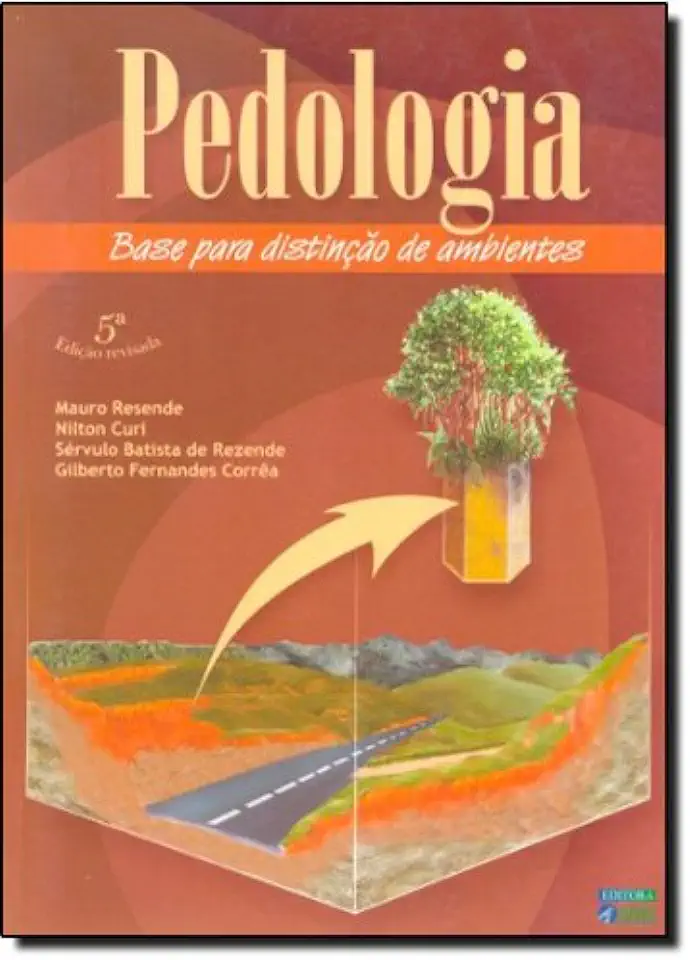
Soil Science: Basis for Environmental Distinction - Mauro Resende
Soil Science: Basis for Environmental Distinction
Introduction
Soil science is the study of soil as a natural resource on the surface of the Earth. It is a multidisciplinary field that draws on the principles of physics, chemistry, biology, and geology to understand how soils form, function, and interact with the environment.
Soil is a complex and dynamic system that is essential for life on Earth. It provides plants with nutrients and water, and it helps to regulate the Earth's climate. Soils also play a vital role in the cycling of nutrients and the decomposition of organic matter.
Soil Formation
Soils are formed through the process of weathering, which is the physical and chemical breakdown of rocks and minerals. Weathering can be caused by a variety of factors, including temperature changes, precipitation, and the action of plants and animals.
As rocks and minerals weather, they release nutrients that are essential for plant growth. These nutrients are then transported by water and wind to the surface of the soil, where they can be taken up by plants.
Soil Texture
The texture of a soil is determined by the size and shape of its particles. Soils can be classified as sandy, silty, clayey, or loamy, depending on the relative proportions of sand, silt, and clay particles in the soil.
Sandy soils are light and well-drained, but they can be droughty. Silty soils are also well-drained, but they have a higher water-holding capacity than sandy soils. Clayey soils are heavy and poorly drained, but they have a high nutrient-holding capacity. Loamy soils are a mixture of sand, silt, and clay, and they have the best properties of all three soil types.
Soil Structure
The structure of a soil refers to the way in which soil particles are arranged. Soils can have a variety of structures, including single-grained, massive, blocky, and prismatic.
Single-grained soils are loose and crumbly, and they have a high porosity. Massive soils are dense and compact, and they have a low porosity. Blocky soils are made up of angular aggregates that are separated by cracks. Prismatic soils are made up of vertical columns that are separated by cracks.
Soil Chemistry
The chemistry of a soil refers to the chemical composition of the soil. Soils contain a variety of elements, including nitrogen, phosphorus, potassium, calcium, magnesium, and sulfur. These elements are essential for plant growth, and they must be present in the soil in the right amounts in order for plants to thrive.
The pH of a soil is also an important factor in plant growth. The pH of a soil is a measure of its acidity or alkalinity. Soils with a pH below 7 are acidic, soils with a pH above 7 are alkaline, and soils with a pH of 7 are neutral. Most plants grow best in soils with a pH between 6 and 7.
Soil Biology
The biology of a soil refers to the living organisms that inhabit the soil. Soils are home to a vast array of microorganisms, including bacteria, fungi, protozoa, and nematodes. These microorganisms play a vital role in the decomposition of organic matter, the cycling of nutrients, and the formation of soil structure.
Soil and the Environment
Soils play a vital role in the environment. They provide plants with nutrients and water, and they help to regulate the Earth's climate. Soils also play a role in the cycling of nutrients and the decomposition of organic matter.
Soils are also a source of pollution. When soils are polluted, they can release harmful chemicals into the environment. These chemicals can contaminate groundwater, surface water, and the air.
Conclusion
Soil science is a complex and fascinating field that is essential for understanding the environment. Soils are a vital resource that provides us with food, water, and shelter. They also play a vital role in the cycling of nutrients and the decomposition of organic matter.
Soil science is a field that is constantly evolving. As our understanding of soils increases, we are better able to manage them for sustainable use.
Enjoyed the summary? Discover all the details and take your reading to the next level — [click here to view the book on Amazon!]